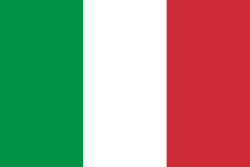The creative work of Cape Verde's popular craftsmen has been rightly supported by the National Handicraft Center, based in Mindelo. Its role involves researching, training, producing, marketing, and promoting various expressions of Cape Verdean craftsmanship.
As a cosmopolitan society integrated into the currents of globalization and the exchange of experiences, Cape Verde boasts internationally acclaimed visual artists. First and foremost, we must mention Leão Lopes, an undeniable reference in contemporary culture: a ceramist, graphic artist, photographer, curator of the Alternativa gallery, and the driving force behind the "Ponto e Vírgula" magazine. In short, a versatile artist who envisions the present with an eye on the future.
But there are also notable painters like Kiki Lima, Tchalé Figueira, Bela Duarte (tapestry), Luísa Queiroz, and Manuel Figueira - and many more could be cited - whose work reflects on the Cape Verdean social dimension within a fantastical imaginary.
MUSIC
Musical Genres of Cape Verde
With the emergence of the concept of world music in the 1990s, Cape Verdean music gradually transcended its natural borders and became the calling card of this archipelago on the west coast of Africa, which lacks natural resources and was discovered by the Portuguese in May 1460.
This global shift is primarily attributed to Cesária Évora, who introduced Cape Verdean music to cities never before touched by its sounds.
In her conquest of the world, Cesária brought with her the "coladera" and, above all, the "morna," which composer Manuel d'Novas defines as "the queen of our land" (in "Nôs morna").
However, the music of the archipelago is not confined to this poetic musical genre or the lively "coladera." The "funaná" and "batuque" complete the array of the most representative genres of Cape Verdean music.
Cape Verdean culture is a blend, the result of the encounter between two peoples and their respective cultures: the Portuguese colonizers and the African slaves. This dual influence characterizes Creole music. On one side, the "morna" and "coladera" with melodies that reveal a strong European and Latin American connection, and on the other, the "batuque" and "finason," which bear a clear African influence.
Cape Verdean music also includes genres related to religion (litanies, "cola San Jon," etc.), work songs (harvest songs, maritime and pastoral songs), and children's songs (lullabies, circle songs, etc.).

